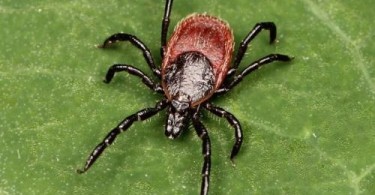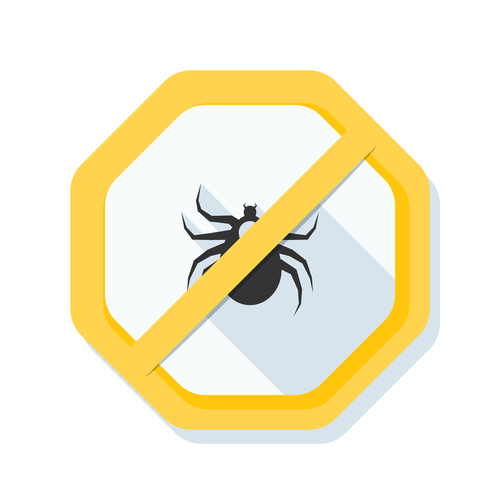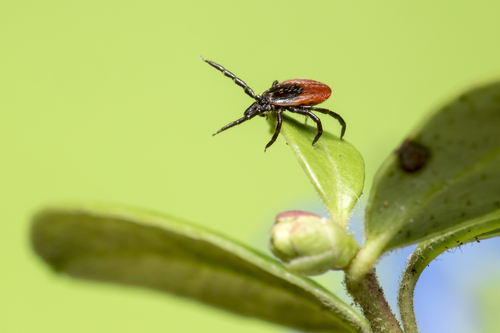
Four summers ago, Carole Flaherty was training for a long-distance hike across the Teton Range of the Rocky Mountains. The retired landscape contractor from Healdsburg was routinely walking 25 miles a day — until strange pains stopped her in her tracks.
Fatigue, abdominal aches and a burning sensation on her right side left her bedridden on and off for months. After a battery of blood tests and misdiagnoses, she’s now in treatment for Lyme disease.
Flaherty, 68, never noticed a tick bite but suspects she was bitten in one of the open space preserves in the hills above Palo Alto, where she often visited her mother.
Her case is hardly unusual. In the West, where Lyme disease is less common than in the Northeast and the Midwest, primary care doctors and most residents may not even be aware that the disease exists in their area. And the lack of awareness can delay diagnosis — a serious danger.
Though a short course of antibiotics cures most patients at early stages, later on the disease becomes far more difficult to identify and treat and can lead to chronic fatigue, muscle and joint pain, and neurological problems.
The complexity of Lyme disease diagnosis, along with strict federal reporting guidelines, makes under-reporting of the disease inevitable. In August 2013, the federal Centers for Disease Control and Prevention announced that the centers’ own estimates, based on surveys of the public, medical claims and laboratory test results, suggest that only 1 in 10 cases of Lyme disease are reported nationwide — 30,000 reported cases compared with 300,000 actual cases.
“For any disease with more of a clinical diagnosis, the reporting is not going to be as good as a disease for which there’s a single laboratory test,” such as HIV or measles, said George Rutherford, an epidemiologist at UC San Francisco.
In 2012, the most recent year for which data are available, there were 66 confirmed cases of Lyme disease in California. And in some parts of Northern California, especially in coastal redwood forests, the prevalence of Lyme disease is higher than the statewide average.
The disease is caused by spiral-shaped bacteria called Borrelia burgdorferi and is transmitted to humans by ticks — on the West Coast, the Western black-legged tick. Nymphal ticks, more likely to be infected than adults, are active from March to August in Northern California. Infected ticks have been found in 42 of the state’s 58 counties.
Because nymphal ticks are about the size of a poppy seed, tick bites often go unnoticed. Most people develop a characteristic bull’s-eye rash within a week or two of infection, but a substantial proportion do not. Other signs of Lyme disease may not appear until later; the most common are flu-like symptoms such as fever, fatigue and muscle aches.
Standard tests for Lyme disease are designed to detect whether a patient’s blood contains antibodies against Borrelia burgdorferi. Yet immune responses vary among patients, and the presence of antibodies doesn’t necessarily indicate an active infection.
Paul Mead, chief of epidemiology and surveillance for the CDC’s Lyme disease program, said under-reporting occurs simply because some people never seek medical care, and many physicians do not report cases. The CDC’s under-reporting studies serve as confirmation of recent increases in reported cases, Mead said. Public health officials in Marin, Santa Cruz, Alameda and Mendocino counties agreed that not everyone diagnosed with Lyme disease is counted as a confirmed case.
But public health surveillance data can lead to a misconception that Lyme is virtually nonexistent in California.
Dr. Raphael Stricker, a San Francisco physician who treats difficult Lyme cases, thinks the reporting system does a disservice to people who are infected with Lyme. “When patients fail that system, they’re told, ‘There’s only 100 cases (per year in California). How could it be Lyme disease?'” Stricker said. “And so they get misled and they don’t get diagnosed, and they get sicker and sicker.”
Finding common ground on any aspect of Lyme disease can be difficult, as the disease is notoriously controversial. Some physicians adhere strictly to CDC guidelines in making diagnoses, while others may rely on different types of lab tests or interpret the tests more broadly. The very existence of chronic Lyme disease is also debated, as is the treatment of chronic cases with long-term antibiotics.
Gil Chavez, deputy director of the Center for Infectious Diseases at the California Department of Public Health, wrote in an email: “The important thing to remember is that surveillance data is still very good to look at trends over time, populations at risk, and to guide prevention efforts. More importantly, we need to remind people that Lyme disease can be prevented.”
Prevention may be the only area of consensus on this controversial disease. Fortunately, in California the risk of Lyme is concentrated in public parks and other wooded areas — unlike the Northeast, where many infected ticks lurk in suburban backyards. So simple preventive measures, such as using insect repellents and wearing pants and long sleeves when hiking, can go a long way.
But that’s little consolation to the Lyme victims who are left with lingering symptoms that keep them from working and living active lives.
Still, other patients make great strides.
Flaherty, the hiker from Healdsburg, says antibiotic treatments have aided her steady recovery.
Now able to walk six miles in a day, she once again dreams of walking across the Tetons.
Lyme disease prevention tips
Wear long pants and long-sleeved shirts. Light-colored clothing makes ticks easier to spot.Use insect repellents that contain 20 to 30 percent DEET.
When hiking, stay in the middle of the trail. Avoid brush and grassy areas.
Check yourself and your pets for ticks after spending time outdoors.
Shower and wash clothes as soon as possible.
If you find a tick, remove it carefully with fine-pointed tweezers; a tick must be attached for at least a day to transmit Lyme disease. Save the tick for identification.




